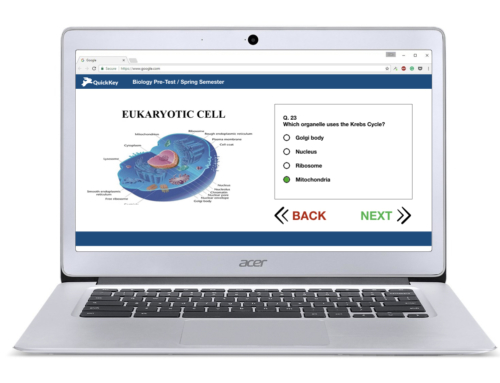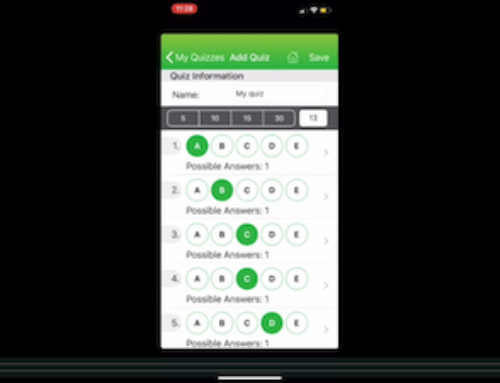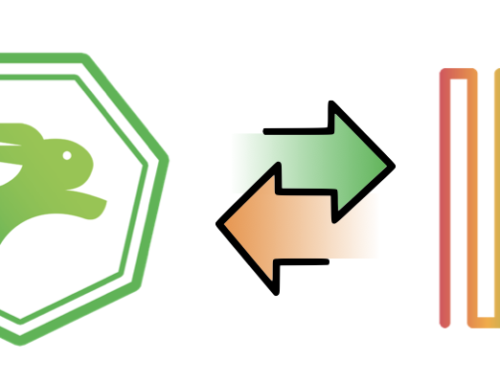Let’s
get the discussion back on track by looking at how teachers can use
Micro-Data and Low-Stakes Assessment every day to achieve personalized
instruction and better outcomes.
 |
| by Walter O. Duncan IV & Isaac D. Van Wesep |
Big Data or Micro-Data?
I
believe in the power of data to improve learning outcomes and enrich
lessons. I know this because research has shown it, and because I myself
have used data over the past ten years to create better lessons and
educate my students.
But
I think the discussion around data is lacking an important distinction:
the difference between “Big Data” (a tool for schools) and what I call
“Micro-Data”, a tool for teachers. Micro-Data is what I use in my daily
lesson planning: the results of daily formative assessments that help me
gauge my students’ mastery of today’s lesson.
In
this paper I will introduce the concept of Micro-Data, and explore the
differences between Big Data and Micro-Data. My hope is to provide a
starting point for educators to think about how to use Micro-Data to
achieve higher learning outcomes, and look at ways to use Micro-Data
without spending aeons crunching numbers!
I
also want to show that Micro-Data is not about testing ruling the
classroom. It’s about a foundation of data to underpin exciting,
project-based activities and lessons.
Big Data is for Schools
At
my school, we do testing twice per semester, and we also have the
Massachusetts MCAS exam once per year. When the results from these
assessments come back, I go to work adjusting my lesson plan. This is
long-cycle assessment. Big Data. I might be able to catch up my current
students in the next semester, but the main beneficiaries of these
analyses are next year’s kids.
Big
Data like this is useful to my school, which can track students and
teachers across years. The data are also useful to me, to an extent. But
the benefit to students, while not minimal per se, is at the very least
telegraphed into the next year: I apply the last year’s data to this
year’s kids, and what I learn this year, I can only apply to the next
year’s kids. This is Big Data in action.
I’m
glad my school uses Big Data to improve outcomes for our students. But
as a teacher I need something different. I need data to help me teach
the kids in my classroom today. Big Data doesn’t do that for me.
Micro-data is for Teachers & Students
If I want data to help me be a better teacher today, I need Micro-Data. To coin a term:
Micro-Data (n) is
the product of short, frequent formative assessments, is collected,
analyzed, and applied within 24 hours, and is linked to an individual
student, in order to provide personalized instruction.
Micro-Data
is all about finding out whether my students understand what I just
taught, or if they did the reading, or met the learning goals of the
day’s project.
It
isn’t about graded assessments. And it isn’t about putting standardized
testing at the center of class time. It is about getting real, hard
data, fast, so I can spend class time having fun while learning with my
students, and giving the right attention to each individual learner.
This
last point is critical, because as I will discuss later in this post,
one way to collect Micro-Data is the short multiple-choice assessment. I
worry that the current discourse has conflated multiple choice and
standardized testing (Big Data), making one part and parcel of the
other. As teachers we need to re-cast not only the discussion, but also
the way we think about the assessment tools available to us.
Let’s get the power to teach back in our own hands
As
a working teacher who has had to bear the weight of every policy change
and technology implementation of the past 14 years, my concern is that
Big Data will come to dominate the national discussion – and my
classroom – at the expense of Micro-Data.
I
am encouraged, though, by the active, involved, and progressive
teachers who are adding their voices to the national discussion. As
teachers, we need to make sure we are in the driver’s seat on every
education issue, including technology and data.
It
is true that the historical cost of technology has meant school
administrations hold the keys to data. But the landscape is shifting.
Today, high-powered technology is in the palms of our hands, and we can
can give ourselves the power to teach using Micro-Data for very little
(if any) money.
As
teachers we need to get out in front of the trend toward Big Data.
Experience shows that frequent, low-stakes assessment works. Let’s make
sure we aren’t measured by Big Data without being given the tools to
harness Micro-Data.
Create the Methods
With
a solid concept of what makes good Micro-Data, teachers can begin to
develop methods to collect and use data from frequent, short formative
assessments that fit with their existing lesson plans. There are
technology tools available for little or no money that make assessment
easier and faster, enabling teachers to create assessments that fit all
of the criteria of good Micro-Data.
5 Signs of Good Micro-Data
-
Is the result of frequent, short, formative assessments
-
Is recorded in a database or spreadsheet so it can be analyzed instantly with minimal effort or time
-
Indicates mastery (or lack of mastery) of a single lesson’s material
-
Analysis will indicate a course of immediate corrective action
-
Can be stored, shared, and used later for meta-analysis
Good Methods are Universally Accessible
And finally, the power to use data needs to be universally accessible.
Having
taught in public, charter, and private schools in Los Angeles,
inner-city Detroit, Washington, DC and Boston, I am a witness to the
consequences of unequal access to technology. The digital divide and the
achievement gap are devastating our social fabric and the lives of
children everywhere. Technology (and data) might be tools to help solve
these problems, or they might be wedges that further isolate the “haves”
from the “have nots”.
Put it into Practice
It
is possible for teachers without huge tech budgets to collect and use
Micro-data, but some kind of technological aid will make the whole
process doable, in terms of time. The ideas below may serve as a good
jumping-off point:
3 Ways to Put Micro-Data into Practice
-
Exit Tickets: end-of-class 1-5 question assessment of the day’s lesson, graded instantly with digital methods or self-grading
-
Entry
Tickets: 3-5 question assessment of prior-night’s homework or reading,
graded instantly with digital methods or self-grading -
In
class: walk-arounds (with a way to record assessment results), voting,
and team projects can all be sources of Micro-Data, so long as the
results are discrete and recorded in a way that allows analysis.
4 Tools to help you use Micro-Data
-
In-Class Voting: use clickers to have students answer questions in real-time
-
In 1:1 environments students can be assessed on personal devices
-
In paper-based classrooms, use one of the many quiz scanning apps for iPhone and iPad to speed grading and analytics.
-
Your own students! Many teachers successfully use self-grading or peer-grading to speed up the analysis of Micro-Data.
Conclusion
For
those who are totally opposed to testing, I say this: Micro-Data is
classroom intelligence you can use to ensure your rich, engaging lessons
are tailored to individual student’s needs. Micro-Data doesn’t replace
or de-value project-based instruction. Rather, it helps to make sure
fundamental concepts are mastered during rich, engaging lessons.
Micro-Data is about discovering whether an individual has mastered
today’s lesson, and taking immediate corrective action.
Many
of the ideas behind Micro-Data are not necessarily new, but by putting a
name to them we create a framework for developing best practices.
The
concept of Micro-Data allows us to talk about data-driven methods
without the distracting shadows of Big Data and Standardized Testing
clouding the discourse.
Powerful
new tools are being built every day. But only when we know what we need
from technology, and have the language to demand it, will we gain
access to the tools that give us the power to teach.
And
only when we teachers make our voices heard, in a clear, cogent
discourse about data, will we be able to gain control of our collective
digital destiny.




